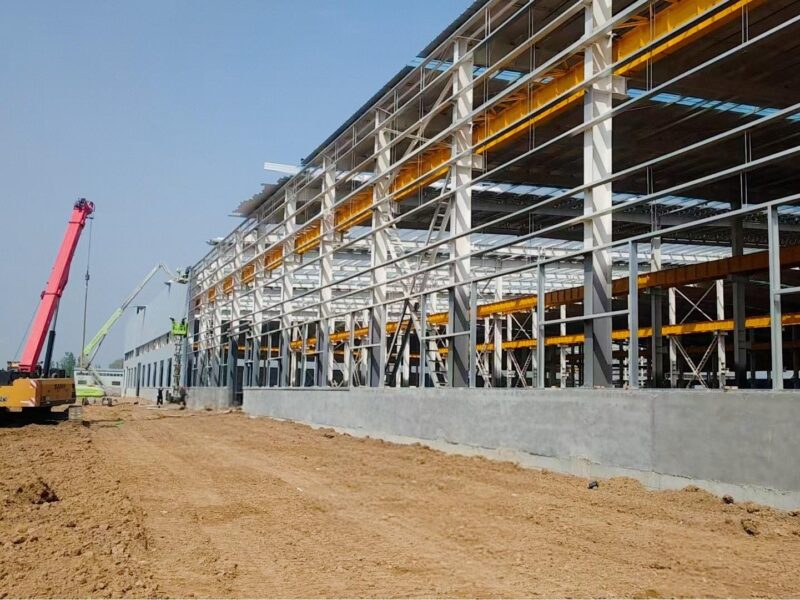
Prefabricated Industrial Warehouses: Streamlining Global Trade and Logistics
In a world where global trade moves faster than ever, efficient storage and logistics infrastructure play a crucial role in business success. Traditional warehouse construction methods often fail to meet the speed, scalability, and cost requirements of today’s international supply chains.
That’s where prefabricated industrial warehouses come in — offering rapid construction, durable performance, and adaptable designs to meet the growing demands of importers, exporters, and logistics companies worldwide.
These steel-based, pre-engineered buildings have become a cornerstone for global commerce, supporting industries from manufacturing to e-commerce, cold storage, and freight forwarding.
Why Prefabricated Warehouses Are Redefining Logistics
Prefabrication allows warehouses to be designed and partially built off-site, then quickly assembled on-site. This process minimizes downtime and ensures predictable project timelines — a major advantage for businesses that can’t afford storage delays.
Additionally, modern prefabricated designs integrate sustainability, automation compatibility, and flexible layouts, making them ideal for the evolving logistics landscape.
Key Advantages of Prefabricated Industrial Warehouses
- Rapid Construction
Prefabricated components are manufactured in controlled factory environments and assembled on-site in weeks, not months. This ensures faster project delivery and earlier operational readiness. - Customizable Design
Warehouses can be tailored to specific storage requirements — from high-bay racking systems to cold storage, distribution hubs, or bonded warehouses. - Durability and Strength
Steel framing ensures resistance to weather, corrosion, and seismic activity, providing decades of reliable use. - Cost-Effectiveness
Reduced construction time, labor, and material waste translate into significant cost savings compared to traditional concrete or brick structures. - Sustainability
Prefabricated warehouses use recyclable steel and can be equipped with solar panels, energy-efficient insulation, and rainwater collection systems. - Global Portability
These structures can be shipped worldwide and quickly assembled at ports, trade zones, or industrial parks — ideal for companies expanding globally.
Applications Across Global Industries
Prefabricated warehouses serve a wide range of industries that rely on fast, secure, and scalable storage:
- E-commerce Fulfillment Centers
Large open-span spaces for automated storage and quick order processing. - Manufacturing Supply Hubs
Integrated spaces for raw materials, finished goods, and assembly lines. - Cold Storage Facilities
Temperature-controlled environments for perishable goods and pharmaceuticals. - Port and Logistics Parks
Flexible warehouse setups near trade gateways for faster cargo handling. - Bonded and Customs Warehouses
Secure facilities designed for import-export operations under customs regulations.
Design Considerations for B2B Clients
When planning a prefabricated industrial warehouse, B2B investors should prioritize:
- Load Capacity and Layout Efficiency for optimal racking systems.
- Automation Compatibility for robotic or conveyor-based operations.
- Thermal and Acoustic Insulation to maintain internal stability.
- Fire Safety and Ventilation to meet international compliance standards.
- Future Scalability to allow easy extensions as business grows.
Case Studies
- Export Logistics Hub (Netherlands):
A 10,000 m² prefabricated warehouse was built in just 45 days, reducing energy consumption by 30% through LED lighting and insulated panels. - E-commerce Center (Malaysia):
A modular steel warehouse supported high-speed sorting systems and improved delivery times by 25%. - Cold Storage Facility (Chile):
Prefabricated design ensured temperature stability and reduced refrigeration energy use by 20%.
Why B2B Clients Choose Prefabricated Warehouses
- Speed: Rapid deployment meets market demands faster.
- Scalability: Modular design supports future business expansion.
- Global Adaptability: Perfect for multinational logistics networks.
- Cost Control: Predictable budgets and reduced on-site labor costs.
- Sustainability: Eco-friendly materials align with corporate ESG goals.
By integrating efficiency, resilience, and sustainability, prefabricated warehouses empower B2B clients to strengthen their global supply chains.
Conclusion
In an age of digital commerce and cross-border trade, prefabricated industrial warehouses have become the backbone of logistics innovation. Their flexibility, durability, and eco-conscious design make them the go-to solution for global businesses seeking to optimize operations and reduce costs.
For investors, developers, and logistics providers, choosing a prefabricated warehouse is not just about building storage—it’s about building efficiency, sustainability, and long-term growth.
